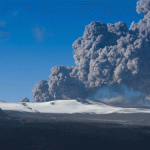
Destruction caused by the earthquake in Christchurch, February 22. Image: Shutterstock
The depth of the latest earthquake in Christchurch played a bigger role than it’s size.
The earthquake that struck Christchurch on February 22 is believed to be an aftershock from the September 3 quake. It’s the largest aftershock so far, but has caused more damage than it’s parent because of its location.
Christchurch sits on a tectonically active area known as the Alpine fault. This fault runs right across New Zealand’s South Island, making it one of the world’s largest fault lines, and is believed to rupture every 200 to 400 years, producing magnitude eight earthquakes.
The recent quake measured 6.3 on the richter scale, while the September quake measured a 7. Glenn Ford, a Seismic Analyst at the British Geological Survey, told the Australian Science Media Centre “This recent Christchurch earthquake was approximately 11 times smaller in energy release than the magnitude 7.0 Darfield earthquake on the 3rd Sept 2010.”
So how did a smaller quake do so much more damage? The Darfield earthquake epicentre was about 70 kilometres further west, so the recent quake was closer to the city on the surface of the earth- only 10 kilometres southeast of the city.
It was also much closer to the surface itself. Dr Dougal Jerram, Durham University, says “”What seems to have happened is that the pressure has built up on a particular fault segment with the epicenter much closer to the city itself.
“This earthquake has also been particularly shallow, so despite measuring slightly less than the previous major earthquake in Christchurch, measuring only about 6.3 on the richter scale in comparison to the previous quake’s 7.1 magnitude, more of the earthquakes energy makes it to the surface causing far greater destruction, than if the quake was deeper underground.”






